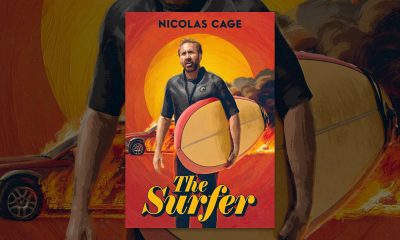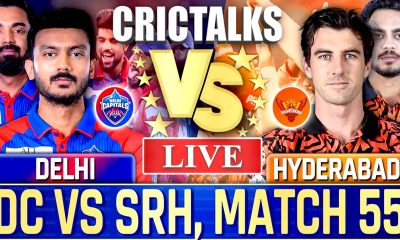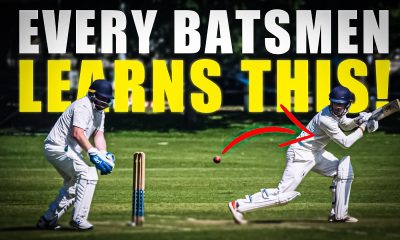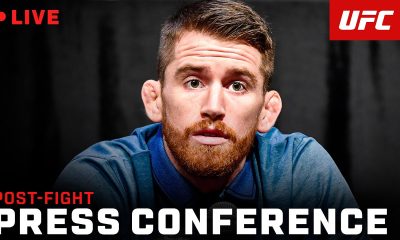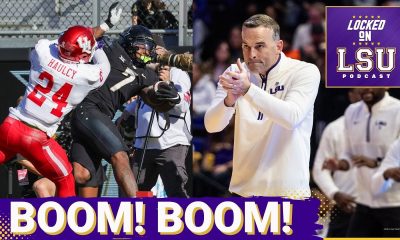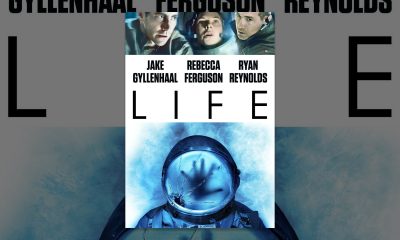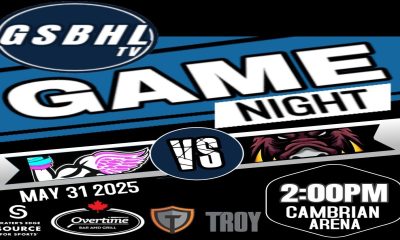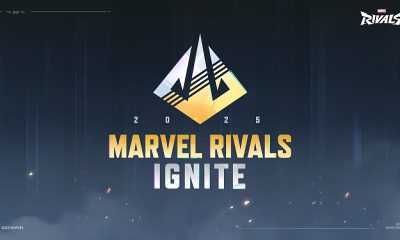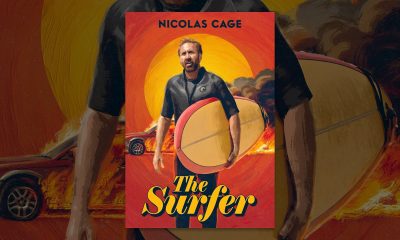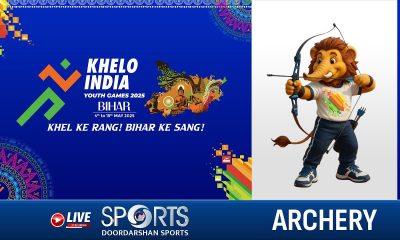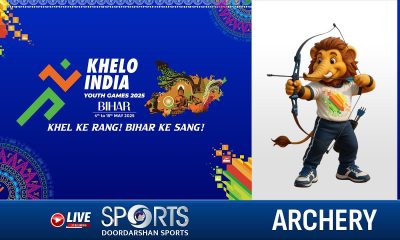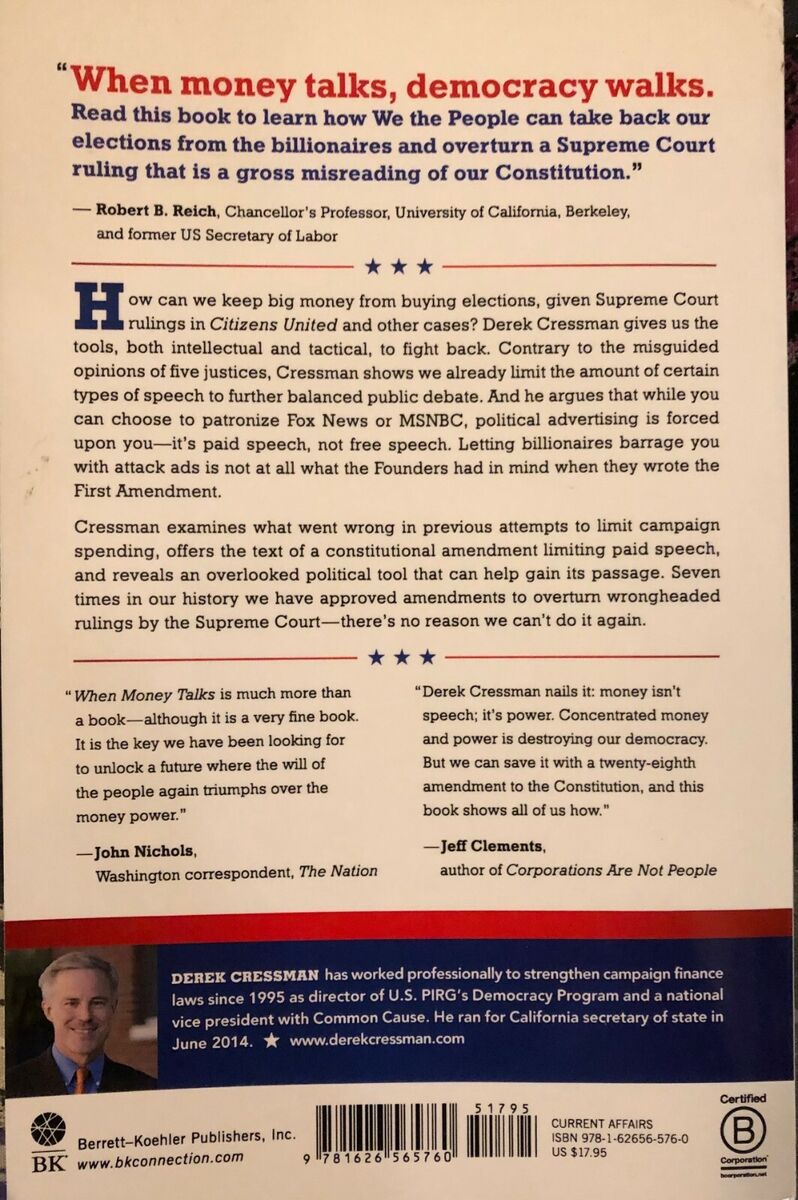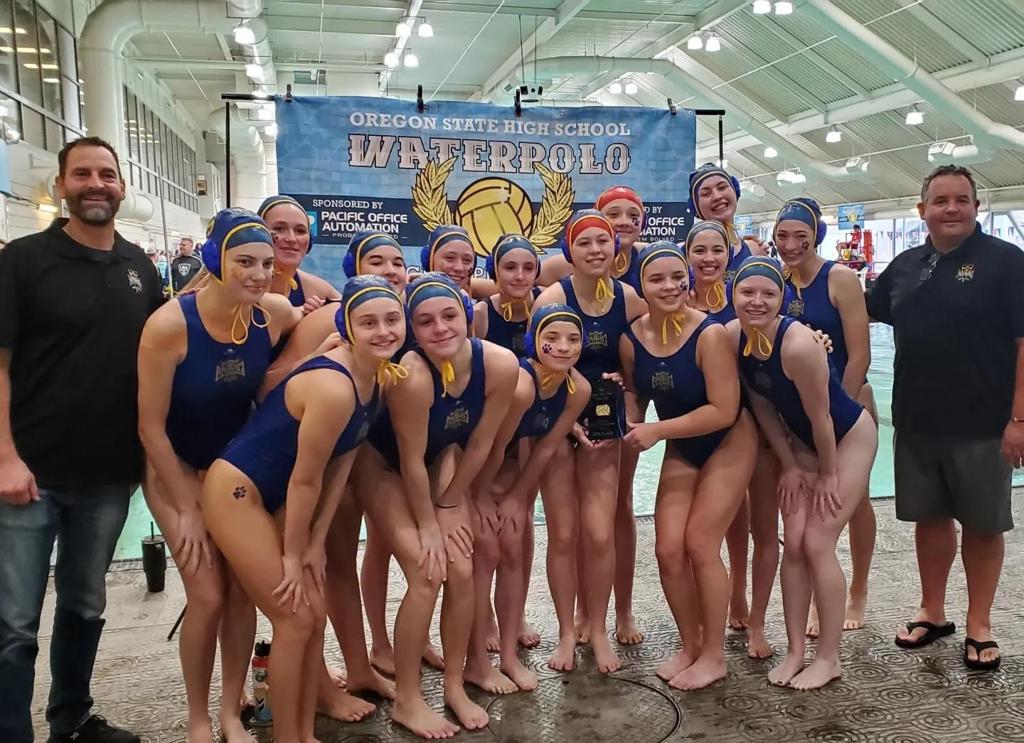NIL
Meta Lands Multiyear Sponsorship Deal With UFC
“I love this sport, and I’m looking forward to working with the UFC to let fans experience it in new ways,” said Mark Zuckerberg, founder and CEO at Meta. Indeed, Zuckerberg has shared several posts on his social platforms featuring him in attendance at UFC events, as well as practicing MMA (and being challenged by […]
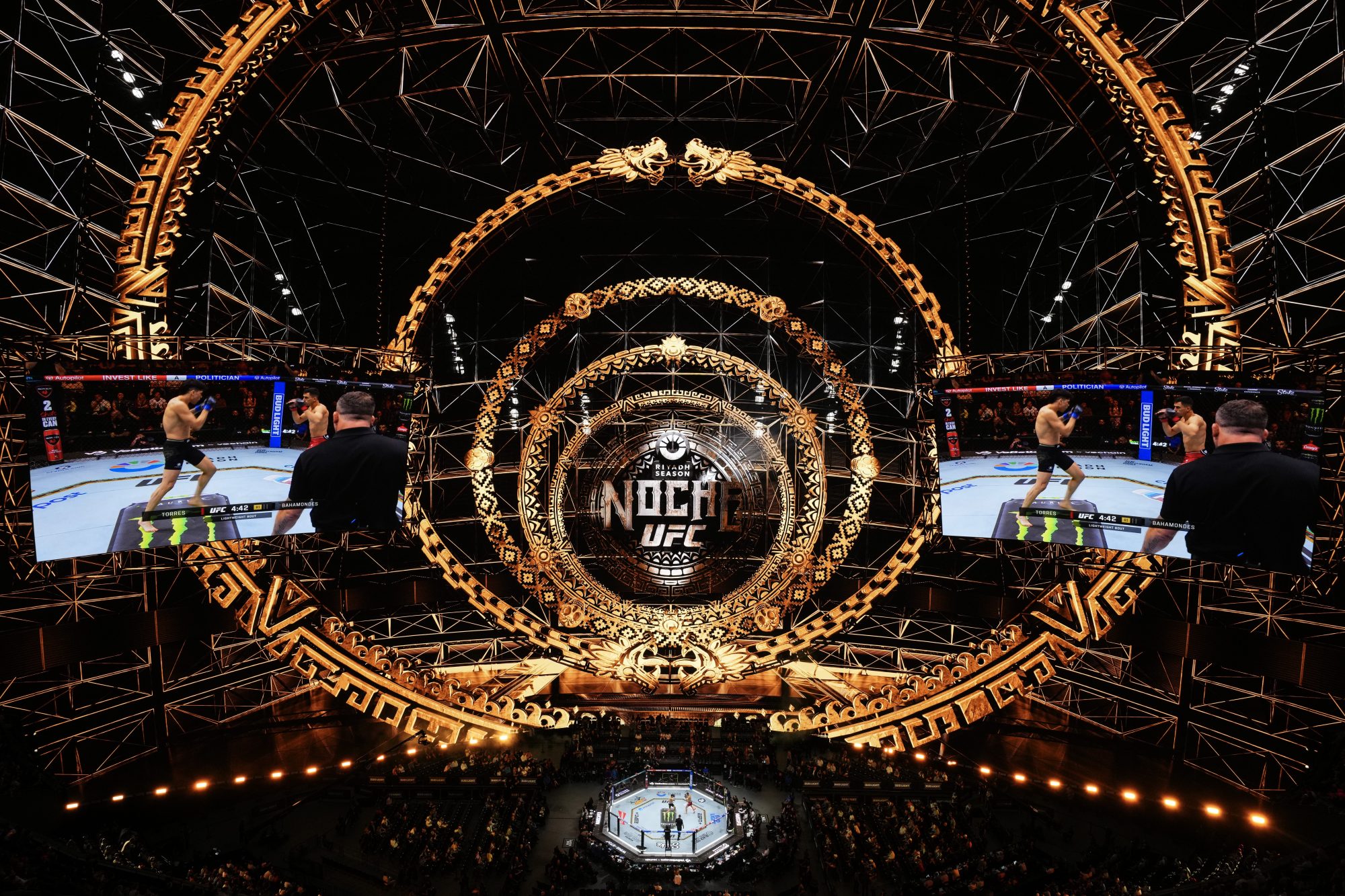
“I love this sport, and I’m looking forward to working with the UFC to let fans experience it in new ways,” said Mark Zuckerberg, founder and CEO at Meta.
Indeed, Zuckerberg has shared several posts on his social platforms featuring him in attendance at UFC events, as well as practicing MMA (and being challenged by Elon Musk in a bout that never materialized), and White was added to Meta’s board of directors in January.
The deal’s financial terms were not disclosed, but Meta’s presence will be felt throughout UFC, with extensive activations on all pay-per-views and fight nights, including brand placement in the Octagon. In addition, Meta will have numerous broadcast features and creative in-arena fan experiences.
Threads will serve as the primary destination for UFC’s community. As UFC’s official social media partner, Threads will feature exclusive original content from the most significant moments of each UFC event. The social media platform will be the primary avenue for fans to share perspectives and engage with one another.
Additional partnership opportunities between Meta and UFC will be announced at a later date.
NIL
West Virginia and Pitt to Meet for Backyard Brawl
Story Links MORGANTOWN, W.Va. – The No. 12 West Virginia University baseball team hits the road for the Backyard Brawl on Tuesday. First pitch from Charles L. Cost Field in Pittsburgh is set for 6 p.m. Mountaineer fans can watch the games on ACCNX, listen on Mountaineer Sports Network, and can follow […]
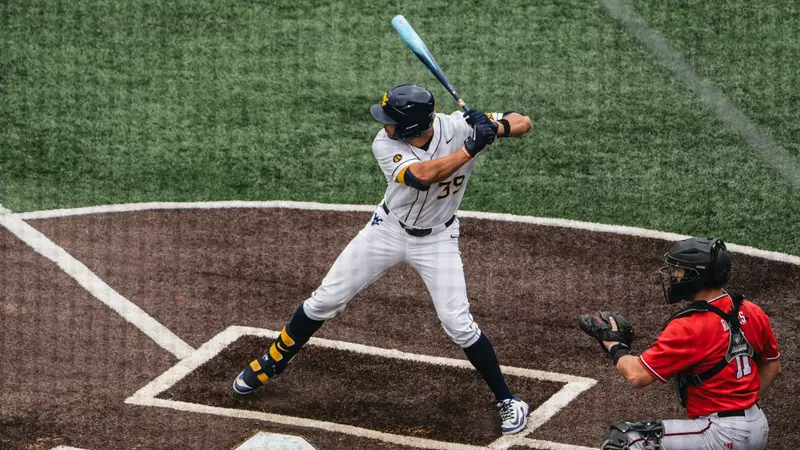
MORGANTOWN, W.Va. – The No. 12 West Virginia University baseball team hits the road for the Backyard Brawl on Tuesday. First pitch from Charles L. Cost Field in Pittsburgh is set for 6 p.m.
Mountaineer fans can watch the games on ACCNX, listen on Mountaineer Sports Network, and can follow along with live stats at WVUsports.com.
West Virginia has the best record in the country at 39-7 after taking two of three from Texas Tech over the weekend. The Mountaineers dropped the opener before coming back to win 3-2 in game two and 5-0 in the rubber game. WVU sits at 18-4 in the Big 12, three games ahead of Arizona State with six games remaining.
In the latest polls, West Virginia sits at No. 7 in Perfect Game, No. 13 in NCBWA, No. 13 in the USA Today Coaches Poll, No. 9 in Baseball America, No. 18 in The Athletic, and No. 12 by D1Baseball, which is recognized by the NCAA.
Junior Sam White leads the team with a .360 batting average while senior Jace Rinehart has a team-high 44 RBI. Rinehart, senior Grant Hussey, and junior Logan Sauve each have seven home runs to pace the offense. On the mound, WVU has a 3.63 team ERA, ninth best in the country.
Probable Pitchers
RHP Chase Meyer (8-2, 2.45 ERA, 49 K, 22 BB, 33.0 IP) vs. RHP Drew Lafferty (3-2, 6.92 ERA, 27 K, 20 BB, 39.0 IP)
Pitt is 24-21 this season after sweeping Virginia Tech this past weekend. The Panthers are 9-15 in the ACC and 11-7 at home this season.
Luke Cantwell leads Pitt with a .357 average and 41 RBI while Ryan Zuckerman has 11 home runs. On the mound, Ethan Firoved has a 2.82 ERA and 60 strikeouts in 44.2 innings along with eight saves.
For more information on the Mountaineers, follow @WVUBaseball on Twitter, Facebook and Instagram.
NIL
Softball Claims 16th Regular Season Title
Story Links 2025 SoCon Tournament Bracket Next Game: vs. Game 3 Winner 5/8/2025 | 10:00 a.m. May. 08 (Thu) / 10:00 a.m. vs. Game 3 Winner History JOHNSON CITY, Tenn. — Chattanooga battled it out in the […]
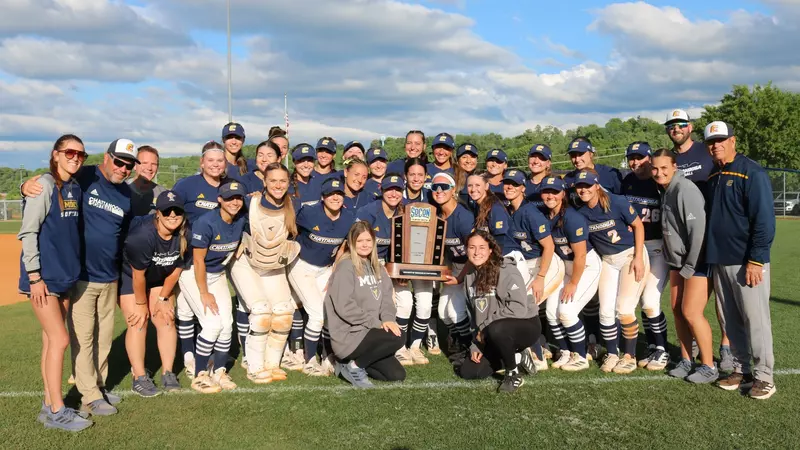
JOHNSON CITY, Tenn. — Chattanooga battled it out in the second game Sunday afternoon at Betty Basler Field in Johnson City, Tenn., beating ETSU 4-3 to claim its 16th regular season Southern Conference title.
The Mocs finished the season at 39-13 overall and 15-5 in league play and is the No. 1 seed heading into the Southern Conference Tournament this week in Spartanburg, S.C.
GAME 2: CHATTANOOGA 5, ETSU 3
Taylor Long came on in the fifth inning in the second game against the Bucs and struck out eight of the last nine batters faced to grab the win. The victory sealed sole possession of first for UTC and the Mocs 16th regular season SoCon title.
Long came on in relief of Peja Goold who pitched the five and two thirds innings in the first game Sunday and the first four of the second. The first batter she faced reached on an error. The next laid down a bunt in front of the plate and reached before the throw could be made to put two runners on. A walk loaded the bases with no one out.
Long got the next two swinging and ended the inning on a strikeout-looking to get out of the jam. The next three in the sixth went down in order and after a fly out to start the Bucs half of the seventh, Long got the final two swinging to claim her 13th victory of the season.
Long went three innings, allowed one hit, struck out eight and walked one.
At the plate, UTC had nine hits, drove in five and had four RBIs. Olivia Lipari was 2-for-4 in the game with a double and a first-inning home run to put the Mocs on the board early. Jayce Purdy was 1-for-2 with two RBI and Presley Williamson drove in one run on a pinch hit.
ETSU took the lead from Chattanooga putting up three runs on three hits in the first to take a 3-1 lead. Baileigh Pitts led off the second with a double and took third on a wild pitch. She scored on a sac fly from Jayce Purdy to cut the lead to one run after two innings.
The fourth started with an Acelynn Sellers double to center. Pitts got her second hit of the game sending pinch runner Abi Pikas to third and Izzy Carlyle came in to run for Pitts. Purdy singled to short scoring Pikas to tie the game.
Raven Jones sacrificed the runners over and Presley Williamson, pinch hitting, grounded out, but drove in the go ahead run to make it 4-3 in the Mocs favor through the fourth.
ETSU stranded a runner in the fourth and three more in the fifth.
The Mocs added a fifth run in the top of the seventh. Lexi Cooley hit a screamer through the left side and took second on a sac bunt by Zoe Wright. She made it to third on a passed ball and a play at the plate mishandled by the catcher sent her home to make it 5-3.
GAME 1: Chattanooga 2, ETSU 3 // 10 innings
Chattanooga fell in its longest game of the season, dropping a 10-inning 3-2 decision to the host Bucs.
With two on in the bottom of the first, ETSU hit a single to score a pair of runs.
The Mocs got a hits in each of the first two innings, but stranded both. In the third, two reached with two outs, but were unable to reach home.
However, in the fourth, the Mocs two-out magic came to life. Jones singled through the left side with two outs. Mia Leone, pinch hitting for Cooley, singled to left field and both advanced on a fielding error. Cooley returned to run the bases.
Presley Williamson, pinch hitting for Wright, singled up the middle to drive in two runs and tie the game 2-2 in the fourth.
With neither team able to score, the game went into extra innings. The Mocs went three up, three down in the eighth, but started the ninth with a double. Abby Orr came on to run for Jones and reached third on a sac bunt. She would be stranded on a pair of foul outs to end the inning.
The 10th invoked the international tie-break rule and Kailey Snell was placed on second to start the inning. Camryn Cernuto sacrificed her over to third, but ETSU got the next two out to end the inning.
ETSU runner at second to start the inning reached third. She would score on a sac fly to end the game.
Lipari was 3-for-5 and Jones was 3-for-4. Williamson went 1-for-1 with two RBI. Long started the game, going four innings and struck out four. Goold came on in the fifth and went 5-2/3 innings with four strikeouts.
SOUTHERN CONFERENCE TOURNAMENT
Chattanooga won back-to-back regular season titles and is the No. 1 seed in the upcoming Southern Conference Tournament hosted by Wofford in Spartanburg, S.C.
The Mocs will play the 10:00 a.m. game on Thursday, receiving a first-round bye. No. 5 seed Mercer and No. 8 Furman will face off in a single-elimination game on Wednesday. The winner of that game will take on No. 4 Wofford. The Mocs will play the winner of that game.
UNCG secured the No. 2 seed. Samford is No. 3, Western Carolina held on for the No. 6 seed and ETSU is the No. 7 seed.
Links for live stats and video streaming will be available on the Chattanooga softball schedule page and SoConSports.com.
FOLLOW CHATTANOOGA SOFTBALL
For the most up-to-date information and news regarding Chattanooga Softball, please follow @GoMocsSB on Twitter & Instagram and ChattanoogaSB on Facebook.
NIL
Former Heisman Winner Gives Interesting Advice to College Athletes about NIL
NIL has altered just about every aspect of college athletics, but one area that doesn’t get as much attention is how athletes are beginning postpone turning pro in order to secure greater NIL deals by staying in college an extra year. This has become a very big topic of discussion in and around college sports, […]
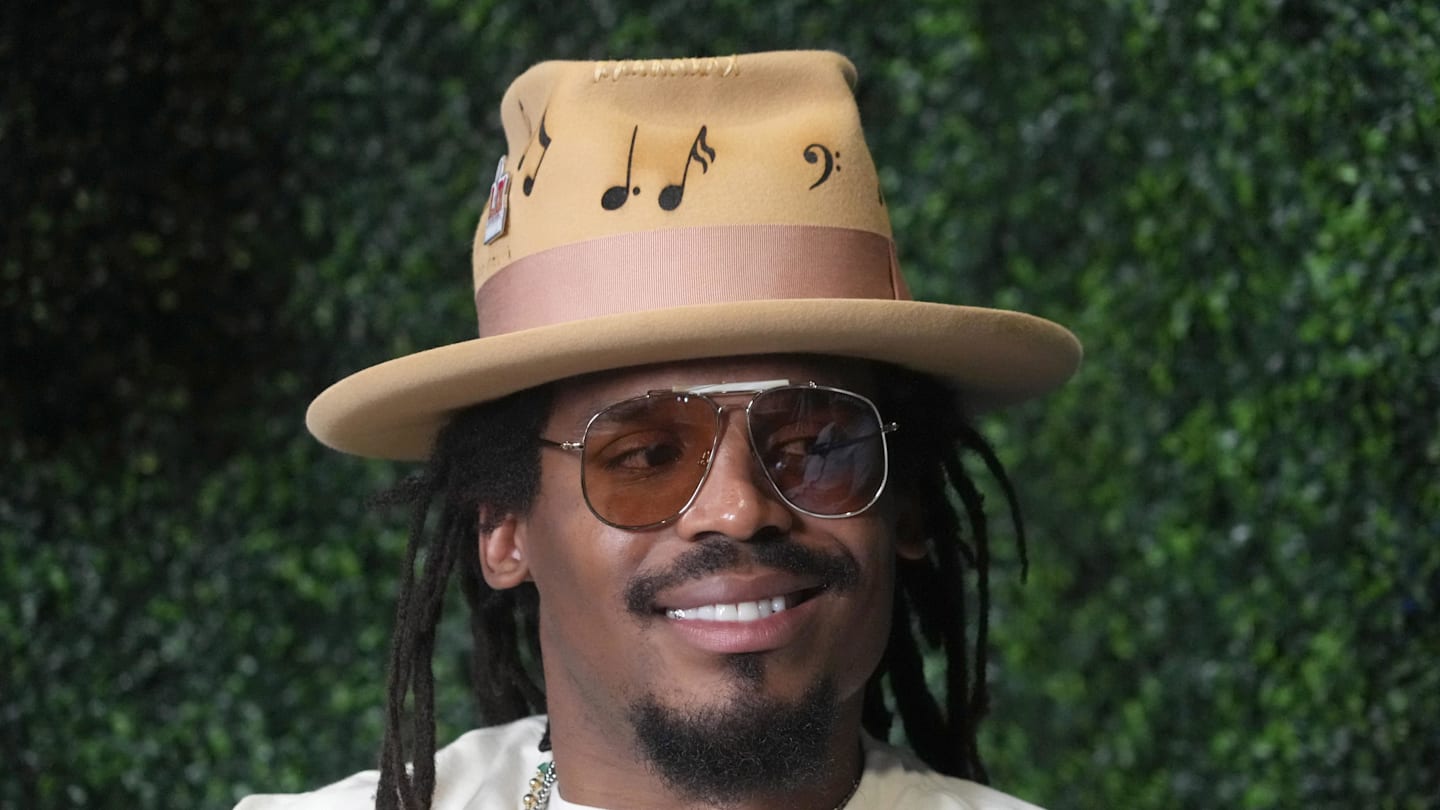
NIL has altered just about every aspect of college athletics, but one area that doesn’t get as much attention is how athletes are beginning postpone turning pro in order to secure greater NIL deals by staying in college an extra year.
This has become a very big topic of discussion in and around college sports, especially when it comes to big time college football. Former Texas Longhorns quarterback Quinn Ewers was at the center of this discussion recently, as he decided to turn down what would have been a very lucrative NIL package for 2025 in order to enter the NFL Draft early.
Ewers would ultimately go on to be selected in the seventh round by the Miami Dolphins, which left many onlookers puzzled as to why he would decide to take what’s certainly a massive pay decrease by entering the draft early.
Former Heisman Trophy winner and Auburn Tigers’ legend Cam Newton was asked his opinion on the situation during a recent episode of his 4th and 1 podcast, and he some rather interesting things to say on the matter.
“I’ve said it time and time again, NIL was just supposed to be a tool for athletes in college to have a comfortble experience in college,” Newton said. “This is not forever money. NIL money will never compare to what the NFL money is. We are so miseducated about what NIL money is guaranteed and what’s not.”
Newton has always been very outspoken on his views surrounding NIL, and how it is effecting college football. For him, it’s all about looking out for what’s in the best interest of the athletes. In his view that, means taking your chances in the NFL draft, and getting to that coveted second contract.
“Anybody will tell you that the real generational money comes in your second NFL contract,” Newton continued. “That’s not going to be given to you, but if you earn the right to get your second contract then that’s when the real comfort comes.”
As a former NFL MVP and first overall draft pick, Newton certainly has the credentials and experience to back up what he is saying. That being said, it’s hard to imagine many athletes deciding to forgo substantial NIL pay days just to enter the draft early and potentially fall into the later rounds.
It’s just become part of the ever growing influence that NIL has on college sports, and for athletes it’s something that each individual will have to weigh on his or her own moving forward.
NIL
NIL is changing college sports; for better or worse?
HUNT VALLEY, Md. (TNND) — It’s been nearly four years since the NCAA enacted a new policy allowing college athletes to profit from their name, image and likeness, and just a few weeks since a federal judge opened the door for college athletic departments to pay athletes directly. Much of the details are still being […]
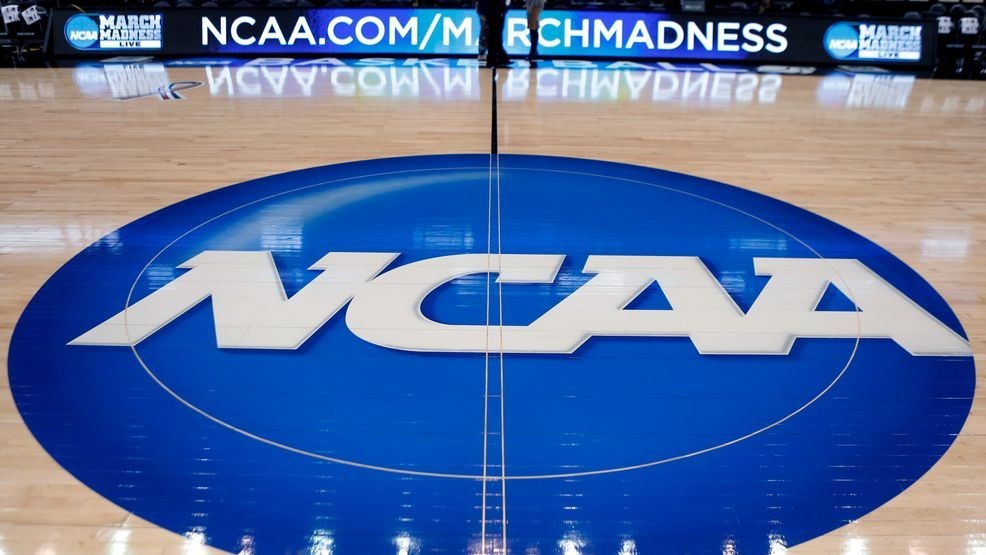
HUNT VALLEY, Md. (TNND) — It’s been nearly four years since the NCAA enacted a new policy allowing college athletes to profit from their name, image and likeness, and just a few weeks since a federal judge opened the door for college athletic departments to pay athletes directly.
Much of the details are still being worked out in the courts. Key components like roster limits, scholarship limits and payment pools are still up in the air.
As is a governing body to oversee all of these new rules, since most current regulation is a patchwork of state laws, legal settlements and NCAA rules.
But, we are starting to see the impacts of college athletes getting paid – and what it means for the enterprise as a whole.
Depending on who you ask, the historical shift is: long overdue for athletes who’ve spent thousands of hours grinding for their craft; late to the party in terms of global sports; the official death certificate for amateurism and the “student” side of “student-athlete”; or, an inevitable reality that has to run wild before it gets reined in and regulated.
To the league itself, it’s a positive step.
When a judge granted preliminary approval for a framework for schools to pay athletes, NCAA President Charlie Baker said it would “help bring stability and sustainability to college athletics while delivering increased benefits to student athletes for years to come.”
The push for college athletes to get paid spans decades, with legal challenges and legislative efforts dating back to at least the early 2000s. Which is surprising, considering the NCAA has been a multi-million dollar industry for several decades, and a multi-billion dollar industry for about a decade.
That disparity is due to the idea of “amateurism,” a word many experts and analysts use when they cite concerns about completely commercializing college sports. That idea goes back more than a century, to 1800s England, where sports were only for the wealthy, and the working class didn’t want them to be able to pay their way to victory.
“I don’t want to say [amateurism] is going to die, but it will certainly be the commercial aspects that are going to permeate,” said David Hedlund, the chairman of the Division of Sport Management at St. John’s University. “I think we’re going to see and hear less and less about amateurism, and college sports are going to look more like professional sports, or a training ground for professional sports.”
The idea that sports are for enjoyment and the love of the game rather than money is a noble one. And players can love the game and make money off their talents at the same time.
But many experts say amateurism has long been dead; the NCAA was just, for whatever reason, the last organization behind the International Olympic Committee to let it die. It’s part of an effort to keep pace with the rest of the world. Overseas soccer and basketball players are spotted when they’re 12 to 14 years old, and go pro when they turn 18.
“We’re in a global marketplace,” said Matt Winkler, a professor and program director of sports analytics and management at American University. “We sort of have to keep up with the other nations if we want to strive and have those great moments in sports for our Olympic teams and our World Cup teams and so forth.”
Coaches have long been compensated, and universities have long profited off their sports teams.
“The money has always been there. It’s just a lot more front-facing now, I think, than it’s been in the past,” Hedlund said.
Some sports analysts say it was quite front-facing in this year’s NCAA Men’s Basketball Tournament.
March Madness was devoid of any significant upsets or Cinderella teams. For the first time in five decades, every team that made it to the Sweet 16 came from a power conference, including all four No. 1 seeds and all but one No. 2 seed.
And, every team that made it to the Final Four was a No. 1 seed.
ESPN analyst Stephen Smith said NIL deals and the now no-limits transfer portal are to blame for why mid-major programs didn’t see much success, and top-tier schools prevailed.
“If there was no NIL, if there was no portal and you have the mid-majors go 0-6 in the second round, please, we ain’t sweating that,” Smith said. “But when you’re able to point to rules that have been implemented that ultimately shows itself to have inflicted upon the game itself, that’s dangerous.
“College basketball as we knew it – which, to me, is all about March Madness – will cease to exist. Because there’s no madness.”
Experts say there is a serious question mark about the current state of how much colleges can pay to entice players, and how many times players can be enticed enough to transfer.
But not all believe it has to be the death of March Madness or competition in college sports. After all, there’s still Division 2 and 3 universities.
Richard Paulsen, a sports economist and professor at the University of Michigan, said it’s hard to gauge the impact of NIL deals and the transfer portal on competition. Because while the top ten or so power schools may be able to offer the most money to the elite players, there’s still a lot of talent out there.
“The top schools have an advantage in getting the A-level talent, but some of the players that might have sat on the bench at a top school previously could be enticed away with NIL money coming from a second tier school,” Paulsen said. “So I think the impact on competitive balance is maybe a little bit less clear.”
Paulsen says, as a professor, he is worried about the impact NIL deals – particularly million-dollar ones – can have on the students themselves, some 18, 19, 20 years old. It raises the question, does a teenager or young adult need this much money?
Shedeur Sanders is 23 years old, and his NIL valuation at the University of Colorado was roughly $6.5 million. Granted, he’s the son of NFL Hall of Famer and head coach for Colorado Deion Sanders.
But, his 2024 stats were top five in completion percentage, passing touchdowns and yards. Several analysts had him as the top prospect in the 2025 NFL draft, but he slid down to the fifth round, shocking much of the sports world.
Various reports place blame on other reasons – maybe he took more sacks than he should have, maybe NFL executives see traits we can’t see, maybe he bombed interviews with the managers, maybe it had to do with his Hall of Famer dad. And he certainly wouldn’t be the first prospect to get picked later than expected and prove all the teams that passed over him wrong.
But, he’s also losing money by going pro. The iced out, custom “Legendary” chain he wore on Draft Day reportedly cost $1 million.
“It is at least worth noting that five years ago, he wouldn’t have had the online presence that he had, and that could have turned off some NFL teams,” Paulsen said. “Without being in the rooms, I don’t know if it did, but that is possible, and it’s not something that would have been possible even five years ago.”
It begs the question, is it even worth going pro for these top-tier college athletes with insane NIL deals?
In the NBA, new data shows it may not be. The league announced last week just 106 players declared early for the 2025 draft. It’s the fewest since 2015. The number typically hovers around 300.
The drop in early entrants could be lingering effects of the extra COVID year.
But, next year, ten schools will pay their rosters somewhere in the neighborhood of $10 million, including several million dollars per top player. That’s far more than the players would make if they were a second-round draft pick in the NBA.
Winkler said the combination of competitive rosters and the scope of these NIL deals has more to do with this drop in early declarations.
“These deals are getting so big that unless you’re going to be a first round draft choice, maybe if you’re going to be kind of a lottery pick or a top 10, 15 pick, it would be better for you to exhaust your eligibility on a major team, because you’re going to make more,” he said.
So, it might be financially advantageous for athletes to wait on the pros. Some announcers were even suggesting Sanders should go back to college if the NFL didn’t deem him ready for the show. (NCAA rules prohibit him from doing so anyway; he declared for the draft and signed with an agent).
But what about the fact that these players, who become millionaires, are still students?
Schools are working to provide resources for these athletes so they can get advice on what to do with their wealth, so that they don’t spend it irresponsibly. Which is not to assume all of them would; it goes without saying this money could greatly benefit an athlete who grew up in poverty and change the trajectory for his/her family.
But Paulsen says he worries about the “student” side of “student-athlete” when we start talking about millions upon millions of dollars and students transferring to whichever school offers them the most. Sometimes credits don’t transfer; sometimes players could feel pressure to fulfill their NIL commitments over their studies, when the stakes are that high.
At a young age, these players are under an unprecedented amount of pressure, from their coach, from their family, from their financial adviser, from social media, from broadcast exposure, from stakeholders, from the tens of millions of people who can now legally bet on them.
“Players should be able to leave bad situations, absolutely, and I certainly support players’ autonomy and chasing financial benefit from their athletic talents,” Paulsen said. “But if we’re going to call them student athletes, we should have some emphasis on the student part of that too. Some of these rules that are helping the athlete are hurting the student.”
One of those rules, he says, is the transfer portal. But in addition to harming the students’ academic careers, experts say this also takes a toll on teams and fans of those teams.
Take Nico Iamaleava for example. The star quarterback abruptly parted ways with Tennessee over an alleged compensation dispute with the school’s collective. He demanded an NIL readjustment to $4 million to keep playing for the Vols, and when they said no, he transferred to UCLA, though it’s unclear if they met his demands.
The exit shocked his teammates in Knoxville, with one of his receivers and defensive backs, Boo Carter, telling reporters, “He left his brothers behind.”
But the new pay-to-play system does also beg the question of school loyalty, not just for the players, but the fans too.
Paulsen says roster continuity, players spending all four years playing for one team, has been an endearing feature of sports like women’s college basketball, when you look at the legacies, for example, Caitlin Clark built at the University of Iowa, or Paige Bueckers at the University of Connecticut.
“I do think there’s definitely some extent to which all this player movement can have negative consequences,” he said.
But, some experts doubt fans of teams need to see the same or similar team year to year.
After all, this past NCAA Men’s March Madness Championship between Florida and Houston – the one ESPN’s Smith said featured no madness at all – scored 18.1 million viewers on CBS. That’s up 22% from last year’s championship, and the biggest audience since 2019.
The Final Four games, featuring all No. 1 seeds, ranked as the most-watched games in eight years.
In other words, so far, so good when it comes to college sports fandom.
One thing broadly agreed upon among experts is that competition must remain intact. The Florida-Houston matchup was a nailbiter.
“The biggest thing that would kill sports is if there is no competitive balance,” Hedlund said. “It is known when you have a really great team being a not-so-great team, if the great team probably will win, people don’t want to watch.”
People still appear to be watching. If they stop, one could assume the NCAA would change its course, or it’d be out of all its money too.
Plus, these experts expect regulation soon – possible measures like transfer restrictions, collectively bargained salary caps, conference realignment to avoid concentration, turning athletic departments into LLCs, putting degree completion into bylaws and evening out the number of roster spots, among other rules.
Experts say: be patient, wait for the legal fights to run their course, and wait for the brightest minds in sports – and Congress – to come up with a solution that pleases the players, teams, coaches, schools and fans.
“This is fundamental to the success of sports, so we just need to figure out what rules, what regulations, what governing bodies, how do we facilitate this?” Hedlund said. “We don’t want to ruin sports. That’s what’s at stake here.”
Winkler says it all comes down to the most “hardcore” stakeholders: fans and alumni. If the SEC and Big 10 just ganged up and created their own Premier League and college sports turned into checkbook sports, it could threaten that school pride.
“This year, we definitely saw cracks in the system,” Winkler said. “If the best athletes just go to the top, are [fans] rooting for an inferior product? Are they still going to have that affinity for their school, their team, their degrees, and people that are doing it? This is really going to test that.
“[Schools] have two key pressure points: keep getting a lot of money from TV so you can fund your athletic department, and keep alumni, fans and donors still feeling as engagedThere’s a lot to be worked out in the next several months and probably the next year to really get a boiler plate idea of what the rules and regulations need to be.”
NIL
“Spike made NIL movies before NIL” – Carmelo Anthony praises Spike Lee for showing the business of college basketball before NIL existed
Spike Lee’s “He Got Game” isn’t just a classic basketball film; it’s a prophetic look at the future of college hoops, one that Carmelo Anthony and a generation of athletes now recognize as the blueprint for the NIL era. Released in 1998, the movie follows Jesus Shuttlesworth, a high school phenom caught in the crossfire […]

Spike Lee’s “He Got Game” isn’t just a classic basketball film; it’s a prophetic look at the future of college hoops, one that Carmelo Anthony and a generation of athletes now recognize as the blueprint for the NIL era.
Released in 1998, the movie follows Jesus Shuttlesworth, a high school phenom caught in the crossfire of big business, college recruiters, and the weight of family and community expectations. For many, it was the first time the realities of college basketball’s underbelly were put on full display.
Exposed the business behind college basketball
“That was the first, probably, NIL movie. It had to be. That and Blue Chips were like the first,” Carmelo Anthony reflected, echoing a sentiment that’s become more common as the NCAA landscape has shifted.
Advertisement
Before NIL (Name, Image, and Likeness) became a rallying cry, Lee was already exposing the transactional nature of recruiting, the pressure on young African-American athletes, and the way their talent became currency for everyone around them.
“Now Spike made NIL movies before NIL. That’s what I’m talking about,” he said.
“He Got Game” exposed the high-stakes world of college sports, where coaches, boosters, and agents compete for the next superstar.
“You really show what this is like, right? For a black athlete in that type of environment who don’t have the resources and access of being able to go to college or the funds to go to college and they are put into these experiences and it’s almost, you expose the whole thing,” Anthony added.
Advertisement
The movie’s recruiting scenes, complete with cash, cars, and promises, felt ripped from real life. For many viewers, it was a wake-up call about the true business of college basketball.
Related: “I knew my days with the Celtics were over” – Larry Bird admits his love for Boston ended when the team traded his favorite teammate
“That movie was so pivotal for basketball culture”
Lee didn’t just capture the pressure and temptation; he also showed the human side. The main protagonist isn’t a saint or a villain; he’s a kid trying to navigate impossible choices, just like so many real-life prospects. The film’s honesty made it “pivotal for basketball culture,” as Carmelo put it, and its impact went far beyond the box office.
Advertisement
“That movie was so pivotal for basketball culture…He got a lot of schools in trouble, too. It’s definitely true. He got games. Definitely true. Got a lot of universities. What kind of trouble? It was 25 years too early,” he continued.
The movie’s influence is even clearer now, as the NCAA finally allows athletes to profit from their name, image, and likeness. The world that “He Got Game” depicted, where everyone profits except the player, is finally dismantled.
“You set the tone with that, though, because seeing them figureheads in there, the coaches at that point in time. It was the movie that made. It’s hard, they hated each other, those coaches,” Melo concluded.
For Anthony, who lived in the recruiting circus and became a college legend before the NIL era, the film was both a mirror and a warning. It captured the tension, the stakes, and the business side of the sport long before the rules changed. Now, as players sign million-dollar deals and control their own brands, it’s clear that Lee’s vision was ahead of its time.
Advertisement
Ultimately, “He Got Game” wasn’t just a movie; it was a forecast. It showed the world what was coming, and for today’s athletes, it’s proof that the game off the court can be just as important as the one on it.
Related: Mike Bibby has a clear stance on recruiting players since NIL: “If that’s the first thing the kid asks about, I don’t want it”
NIL
2025 Coaches’ All-District 10-3A softball team – Crescent City Sports
MVP – Melaine Pomar – De La Salle – JRCOACH OF THE YEAR – George Neumiller – De La Salle PITCHERS:Melainie Pomar – De La Salle – JRMakayla Richoux – Cabrini – JR CATCHERS:Mariah Sanchez – De La Salle – SRGabriella Goodick – Cabrini – 8TH INFIELDERS:Shayla Santos – De La Salle – SRCaitlyn Vaughn […]
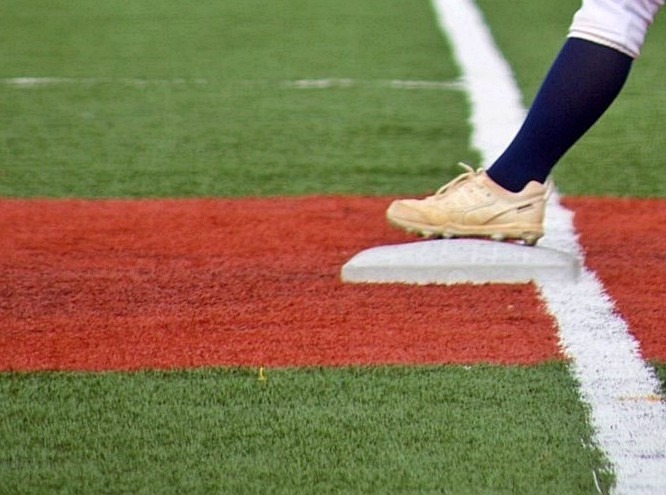
MVP – Melaine Pomar – De La Salle – JR
COACH OF THE YEAR – George Neumiller – De La Salle
PITCHERS:
Melainie Pomar – De La Salle – JR
Makayla Richoux – Cabrini – JR
CATCHERS:
Mariah Sanchez – De La Salle – SR
Gabriella Goodick – Cabrini – 8TH
INFIELDERS:
Shayla Santos – De La Salle – SR
Caitlyn Vaughn – De La Salle – JR
Taylar Allen – De La Salle – SO
Ashley Normand – Cabrini – SR
Taylor Belacci – Ursuline – JR
Chloe Guilbeau – Ursurline – 8TH
Katelyn Murray – Lord Beaconsfield Landry – SR
Shamila Brooks – Livingston Collegiate – SR
OUTFIELDERS:
Riley Patrick – De La Salle – SR
Lindsey Thibodaux – Cabrini – SO
Charniya Ross – Lord Beaconsfield Landry – SO
UTILITY:
Shelby Culotta – Ursuline – 8TH
2ND TEAM ALL-DISTRICT
PITCHER:
Dixie Tatum – Ursuline – 8TH
CATCHER:
Ava Gonzales – Ursuline – FR
INFIELDERS:
Emely Taveras – De La Salle – SO
Grace Williams – Cabrini – JR
Piper Schaub – Cabrini – SR
Kymora Boyd – Livingston Collegiate – SR
OUTFIELDERS:
Giani Miceli – De La Salle – SR
Sophia Felps – Cabrini – SR
Sophia Schielder – Cabrini – SR
UTILITY:
Skylar Tybussek – De La Salle – JR
-

 College Sports3 weeks ago
College Sports3 weeks agoFormer South Carolina center Nick Pringle commits to Arkansas basketball, John Calipari
-
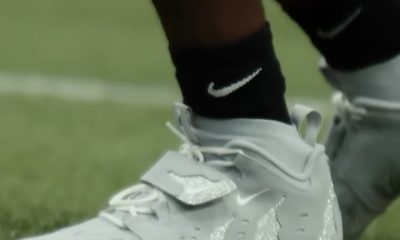
 Fashion1 week ago
Fashion1 week agoThis is poetry in motion.
-
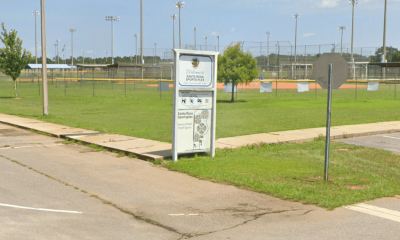
 Rec Sports1 week ago
Rec Sports1 week agoDeputies investigating incident that caused panic at Pace youth sports complex
-

 High School Sports2 weeks ago
High School Sports2 weeks agoAppling County football to forfeit all 10 wins from 2024
-
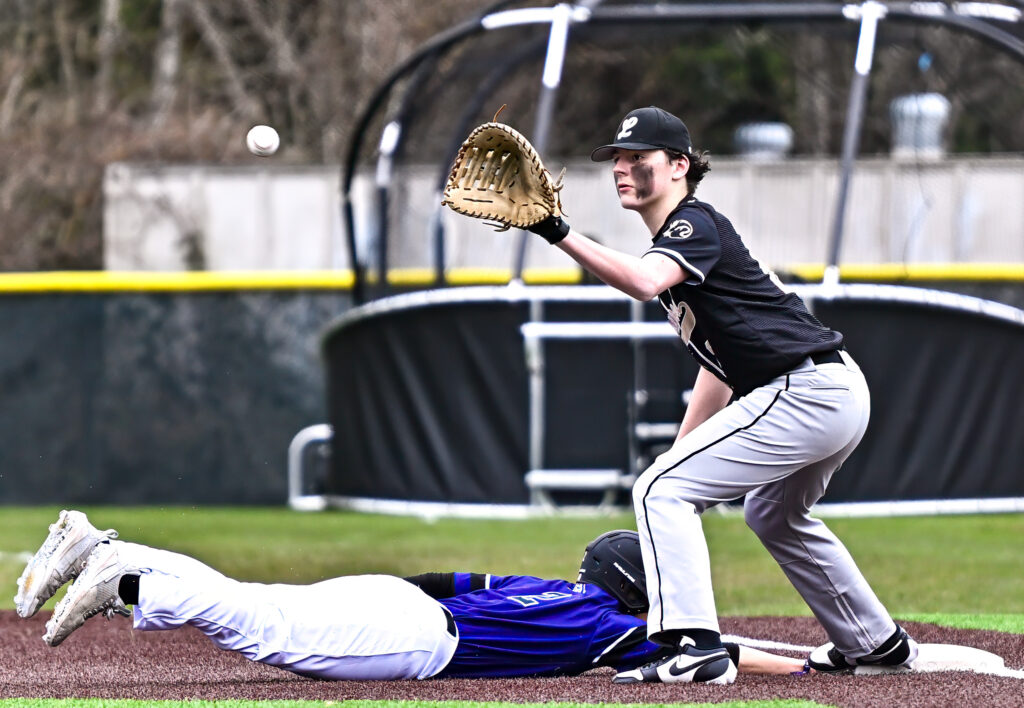
 Sports3 weeks ago
Sports3 weeks agoSports Roundup
-
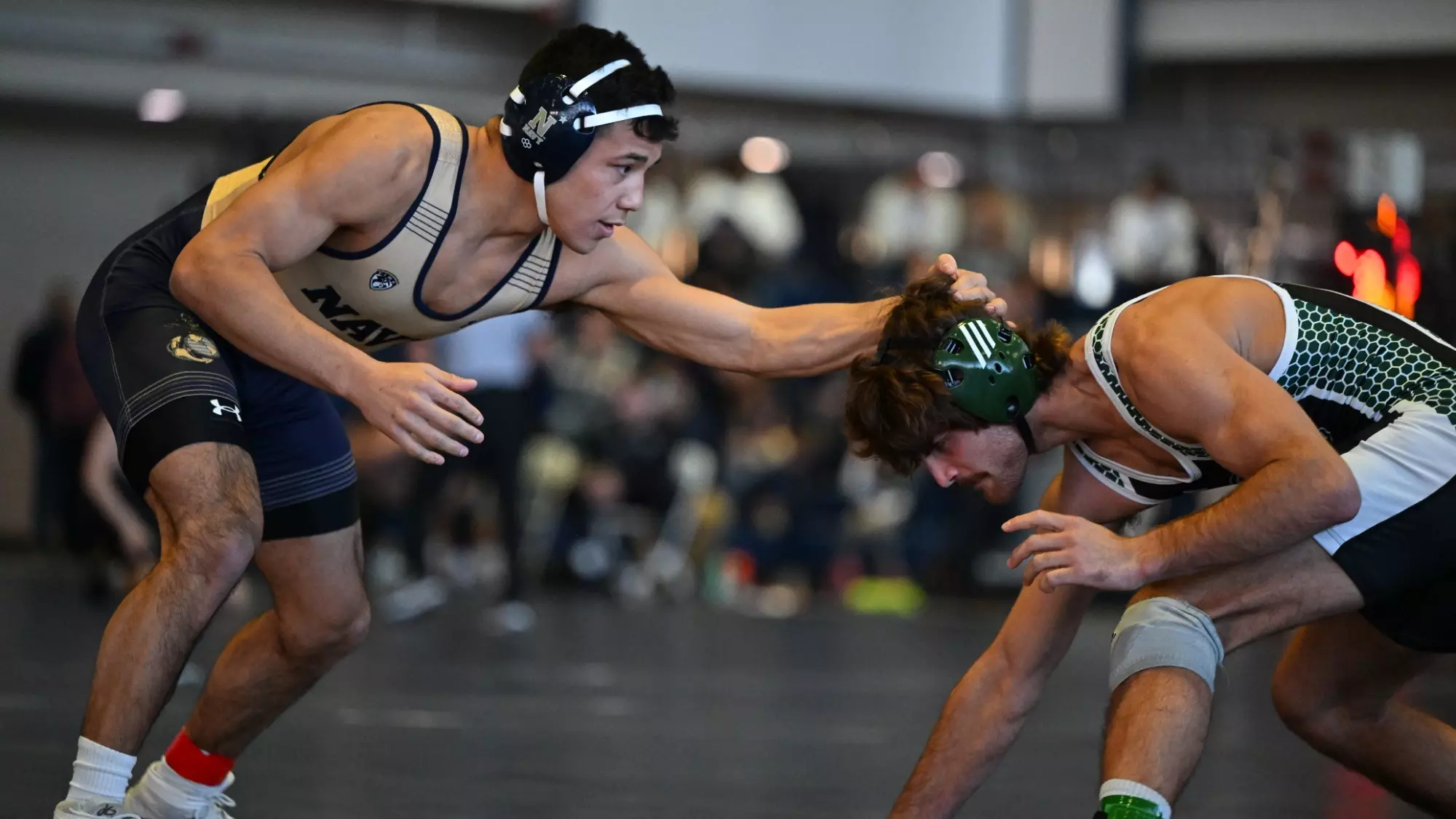
 College Sports2 weeks ago
College Sports2 weeks agoLehigh wrestlers prepare for wrestling U.S. Open
-
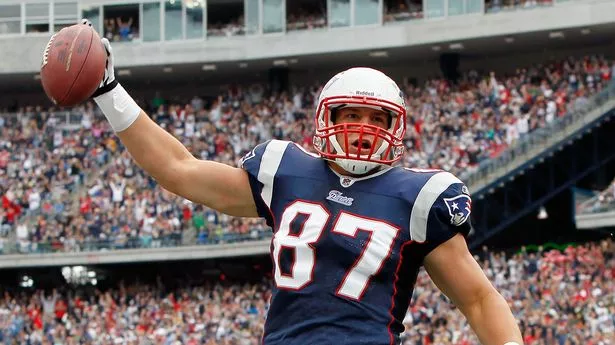
 NIL3 weeks ago
NIL3 weeks agoPatriots Legend Rob Gronkowski Makes Surprising Career Move
-

 NIL1 week ago
NIL1 week agoSave Like a Pro: NIL money isn’t free cash—taxes take a bite! Set aside part of …
-
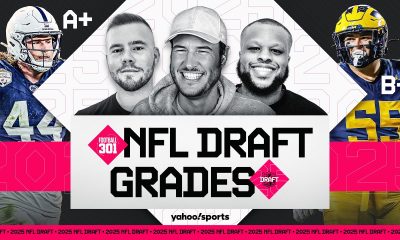
 Sports2 weeks ago
Sports2 weeks agoHow to watch Yahoo Sports' NFL Draft Live show
-

 Fashion2 weeks ago
Fashion2 weeks agoWatch Saudi Arabian GP free live stream


